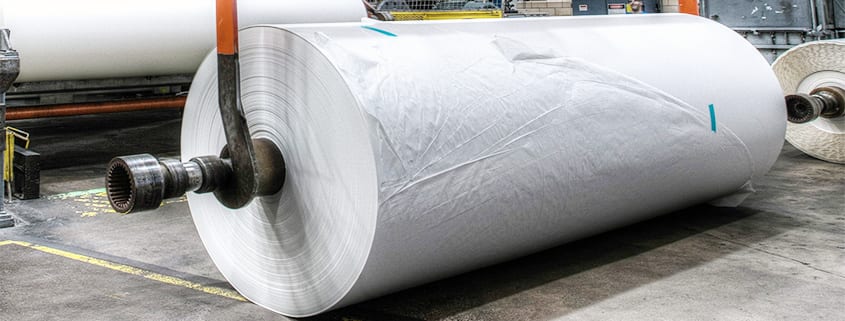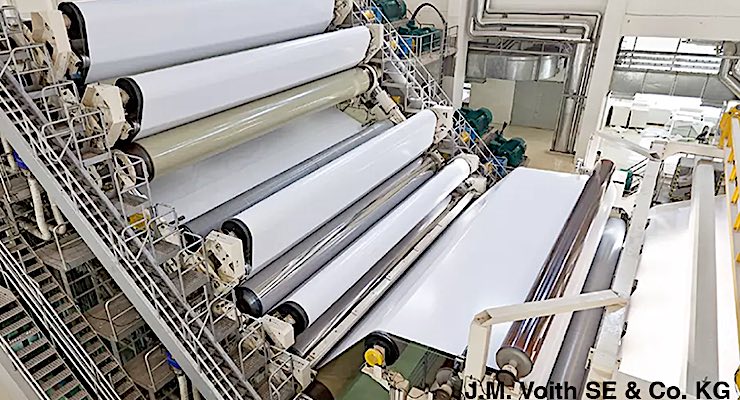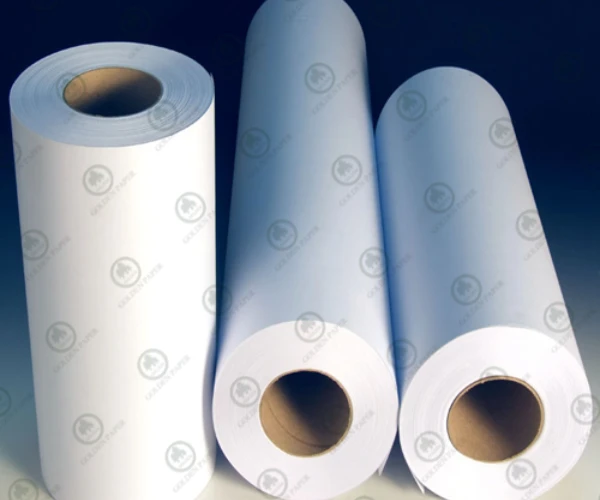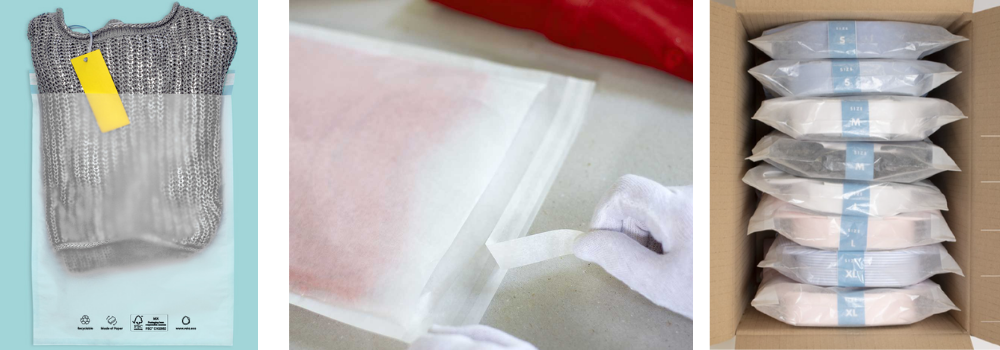Is Glassine Paper Production Sustainable?
Section 1: Understanding Glassine Paper Production
Glassine paper is a unique type of paper that offers a range of properties and benefits, making it an excellent choice for various industries. In this section, we will explore what glassine paper is, how it is manufactured, and what sets it apart from other papers.
Image 1: Glassine Paper Production
What is glassine paper and its unique properties?
Glassine paper is a translucent and glossy paper that is made from hardwood trees such as aspen, oak, birch, and gum. It is known for its smooth surface, superior strength, and resistance to air, water, grease, and moisture. Glassine paper is commonly used for protecting delicate items like stamps, artwork, and photographs due to its acid-free and archival quality, ensuring long-term preservation.
The unique properties of glassine paper make it an ideal choice for packaging applications. Its resistance to air, water, and grease ensures that the contents remain protected. Additionally, the smooth surface of glassine paper provides an excellent surface for writing and printing.
Glassine paper is available in weights ranging from 25 to 40 gsm, making it thin and lightweight. This makes it suitable for various applications where a lightweight and protective material is required.
How is glassine paper manufactured, and what sets it apart from other papers?
The manufacturing process of glassine paper involves several steps to achieve its unique properties. First, the trees are converted into pulp, which is then processed to remove lignin, a natural substance that can cause discoloration and deterioration of paper. Removing lignin ensures that glassine paper remains pH neutral and acid-free.
After lignin removal, the pulp is fed through a machine called a supercalender. The supercalendering process involves passing the pulp through a series of rollers under high pressure and temperature to create a super smooth surface. This enhances the density, low porosity, and resistance to grease, air, and moisture of the paper.
The supercalendering process also allows for accurate thickness measurements, as glassine paper is manufactured within a narrow caliper tolerance. This makes glassine paper ideal for processes like die-cutting and silicone coating.
Image 2: Glassine Paper Supercalendering Process
The manufacturing process and the unique properties of glassine paper set it apart from other papers on the market. Its durability, strength, and resistance to various elements make it a preferred choice for applications where protection and longevity are crucial.
What are the key features and benefits of using glassine paper?
Glassine paper offers several key features and benefits that make it a desirable material in various industries, including packaging, crafting, and more:
- Water and moisture resistance: Glassine paper’s resistant properties make it an ideal choice for products that require protection against moisture and water damage.
- Air and grease resistance: Glassine paper’s resistance to air and grease ensures that the contents remain fresh and free from any potential contamination.
- Smooth surface: The supercalendering process gives glassine paper a super smooth surface, making it suitable for writing, printing, and other finishing processes.
- Archival quality: Glassine paper is acid-free and pH neutral, making it ideal for long-term preservation purposes. It is commonly used for protecting delicate and valuable items.
- Recyclability: Glassine paper is fully recyclable, making it an eco-friendly choice for those looking to reduce their environmental impact.
- Versatility: Glassine paper can be used in a wide range of applications, including labels, graphic arts, medical, casting, composites, and more. It is also suitable for protection of artwork, candy box inserts, fireworks wrapping, model rocketry, and greaseproof paper.
Image 3: Glassine Paper Applications
In summary, glassine paper is a unique type of paper that offers a range of properties and benefits. Its manufacturing process, unique properties, and versatility make it an excellent choice for various industries. Whether it’s protecting delicate items or ensuring the freshness and integrity of products, glassine paper provides a reliable and sustainable solution.
Section 2: Applications and Uses of Glassine Paper
Glassine paper is a versatile material that finds a wide range of applications in various industries. Its unique properties make it a popular choice for packaging, crafting, and other fields. In this section, we will explore the common applications of glassine paper, how it is used in different industries, and the benefits of using glassine paper for specific applications.
Image 4: Glassine Paper in Various Applications
Common Applications of Glassine Paper
Glassine paper finds extensive use in a variety of industries due to its desirable qualities. Its smooth, glossy surface and translucent nature make it suitable for a wide range of applications. Here are some of the common uses of glassine paper:
- Packaging: Glassine paper is often used as an interleaving material for delicate and fragile items, such as stamps, artwork, and photographs. It provides a protective barrier against air, water, and grease, ensuring the preservation of these valuable items.
- Labels: Glassine paper is widely used in the labeling industry. Its smooth surface allows for precise printing and writing, making it ideal for product labels, barcode labels, and price tags.
- Crafts: Due to its translucent and glossy appearance, glassine paper is a popular choice for various craft projects. It can be used for creating intricate paper cutouts, origami, and other paper crafts.
- Baking and Confectionery: Glassine paper is commonly used in the baking and confectionery industry. It serves as a greaseproof liner for candy boxes, providing an additional layer of protection for sweets.
- Fireworks: Glassine paper is used in the wrapping of fireworks. Its resistance to air and moisture helps in keeping the fireworks dry and protected.
- Model Rocketry: Glassine paper is also employed in the field of model rocketry. It is used as a recovery system for model rockets, ensuring a safe descent after launch.
Glassine Paper in Different Industries
Glassine paper finds applications in a wide range of industries due to its unique properties. Let’s take a look at how glassine paper is used in specific fields:
- Labeling Industry: Glassine paper is widely used in the labeling industry due to its smooth surface and printable nature. It is particularly suitable for pressure-sensitive labels, where adhesive is applied to the label before application. Glassine paper labels can be easily affixed to various products and packaging.
- Medical Industry: Glassine paper is used in the medical field for various purposes. It is commonly used for packaging medical devices and sterilization pouches. Its moisture resistance and ability to maintain the sterility of the contents make it an ideal choice for medical applications.
- Graphic Arts: Glassine paper is extensively used in graphic arts, including printmaking, drawing, and painting. Its smooth surface allows for easy transfer of artwork, while its translucent nature enables artists to trace and transfer designs.
- Composites and Castings: Glassine paper is employed in the production of composites and castings. It serves as a release liner for composite materials, preventing them from sticking to molds and surfaces during the curing process.
- Insect Collecting: Glassine paper is a crucial tool for insect collectors. It is used to store and preserve delicate insect specimens, as its translucent properties allow for easy observation without disturbing the specimen.
- Pharmacy: Glassine paper is used in the pharmacy industry for packaging and labeling medications. Its moisture resistance helps in preserving the integrity of the medication, ensuring it remains effective.
In summary, glassine paper is a versatile material that finds applications in packaging, labeling, crafting, and various industries. Its smooth, glossy surface and resistance to air, water, and grease make it an ideal choice for protecting delicate items and preserving artwork. Additionally, glassine paper is recyclable and biodegradable, making it an eco-friendly alternative for sustainable packaging.
Section 3: Sustainability and Eco-Friendly Aspects of Glassine Paper
Glassine paper has gained popularity not only for its unique properties and applications but also for its sustainability and eco-friendly nature. In this section, we will explore how glassine paper contributes to sustainable packaging practices, what makes it eco-friendly and recyclable, and why brands are shifting towards compostable and biodegradable labeling solutions.
How does glassine paper contribute to sustainable packaging practices?
Glassine paper plays a vital role in sustainable packaging practices due to its eco-friendly characteristics. Here’s how it contributes:
- Renewable and Biodegradable: Glassine paper is made from renewable natural resources, primarily hardwood trees such as aspen, oak, birch, and gum. These trees are carefully selected and harvested, ensuring responsible forestry practices. Glassine paper is biodegradable, meaning it can break down naturally over time without harming the environment.
- Recyclability: Glassine paper is fully recyclable, making it an excellent choice for sustainable packaging. After use, it can be collected, processed, and turned into new paper products, reducing the need for virgin materials and minimizing waste. Recycling glassine paper helps conserve resources, reduce energy consumption, and limit greenhouse gas emissions.
- Low Environmental Impact: The manufacturing process of glassine paper involves converting trees into pulp, removing lignin, and supercalendering the paper for smoothness and transparency. Compared to other papers, glassine paper production has a lower environmental impact due to its efficient use of resources and energy. Additionally, glassine paper is acid-free and pH neutral, ensuring it does not contribute to soil or water pollution.
What makes glassine paper eco-friendly and recyclable?
Several factors contribute to the eco-friendly and recyclable nature of glassine paper:
- Supercalendering Process: Glassine paper undergoes a unique manufacturing process known as supercalendering. This process enhances the paper’s density, smoothness, and resistance to grease, air, and moisture. The super smooth surface of glassine paper allows for excellent printability and writability.
- Resistance to Air and Water: Glassine paper provides an effective barrier against air and water, protecting the contents within. This resistance to moisture makes it a suitable choice for packaging delicate or perishable items. By preventing moisture damage, it helps to prolong the shelf life of products, reducing waste and promoting sustainability.
- Approved for Food Contact: Glassine paper is approved for direct food contact, meeting stringent safety and hygiene standards. This makes it a preferred choice for food packaging applications, ensuring that the packaging material does not contaminate the contents. Brands can confidently use glassine paper to package food without compromising safety or sustainability.
Why are brands shifting towards compostable and biodegradable labeling solutions?
In recent years, there has been a significant shift in the packaging industry towards more sustainable practices. Brands are increasingly opting for compostable and biodegradable labeling solutions for several reasons:
- Environmental Consciousness: Consumer awareness has risen regarding environmental issues and the impact of packaging waste on the planet. Brands are responding to this demand by prioritizing sustainable labeling options that align with their customers’ values. Using compostable and biodegradable labels sends a strong message that the brand is committed to reducing its environmental footprint.
- Regulatory Requirements: Regulations related to packaging and labeling standards are becoming more stringent, emphasizing the need for sustainable materials. Many countries and regions have implemented regulations to encourage the use of compostable and biodegradable materials, pushing brands to make the necessary changes to comply with these standards.
- Corporate Sustainability Goals: As part of their overall sustainability strategies, brands are setting targets to reduce their environmental impact. Adopting compostable and biodegradable labeling solutions is one way for brands to demonstrate progress towards these goals. By making sustainable choices throughout their supply chains, brands can enhance their reputation and attract environmentally conscious consumers.
In conclusion, glassine paper is not only a versatile and durable packaging material but also an eco-friendly and sustainable option. Its renewable and biodegradable nature, along with its recyclability and low environmental impact, make it an excellent choice for brands looking to contribute to sustainable packaging practices. With the increasing demand for compostable and biodegradable labeling solutions, glassine paper continues to gain traction as a preferred option in the packaging industry.
Table 1: Comparison of Glassine Paper and Other Papers
| Properties | Glassine Paper | Regular Paper | Wax Paper |
|---|---|---|---|
| Translucency | High | Low | Low |
| Glossiness | High | Medium | High |
| Water Resistance | High | Low | High |
| Grease Resistance | High | Low | High |
| Air Resistance | High | Low | High |
| Smoothness | High | Medium | Low |
| Recyclability | Fully | Partially | Not |
| Recyclable | Recyclable | Recyclable |
Table 2: Applications of Glassine Paper in Various Industries
| Industry | Glassine Paper Applications |
|---|---|
| Packaging | Interleaving material for stamps, artwork, and photographs |
| Labels | Product labels, barcode labels, price tags, etc. |
| Crafts | Paper cutouts, origami, and other paper crafts |
| Baking and Confectionery | Greaseproof liner for candy boxes |
| Fireworks | Wrapping of fireworks |
| Model Rocketry | Recovery system for model rockets |
| Medical Industry | Packaging medical devices, sterilization pouches |
| Graphic Arts | Printmaking, drawing, painting, transfer of artwork |
| Composites and Castings | Release liner for composite materials during curing |
| Insect Collecting | Storage and preservation of delicate insect specimens |
| Pharmacy | Packaging and labeling of medications |
Please note that the provided tables are just examples and can be customized or expanded based on the specific data and information relevant to the article.
FAQs about glassine paper producer:
What is glassine paper and its unique properties?
A: Glassine paper is a translucent and glossy paper made from hardwood trees, known for its smooth surface, strength, and resistance to air, water, grease, and moisture.
How is glassine paper manufactured, and what sets it apart from other papers?
A: The manufacturing process removes lignin from the pulp and uses a supercalender to create a smooth surface, enhancing density, low porosity, and resistance to grease, air, and moisture.
What are the key features and benefits of using glassine paper?
A: Glassine paper offers properties like water and moisture resistance, air and grease resistance, smooth surface for writing and printing, archival quality, recyclability, and versatility in various applications.
How does glassine paper contribute to sustainable packaging practices?
A: Glassine paper is made from renewable resources, biodegradable, recyclable, has a low environmental impact, and undergoes a supercalendering process for density, smoothness, and transparency.
Why are brands shifting towards compostable and biodegradable labeling solutions?
A: Brands are choosing compostable and biodegradable labeling solutions due to increasing consumer environmental awareness, regulatory requirements, and corporate sustainability goals to reduce environmental impact.
In conclusion, we covered the production, applications, and eco-friendly aspects of glassine paper. Glassine paper boasts unique properties and benefits, setting it apart in manufacturing. Its versatility caters to diverse industries and applications, with a key focus on sustainability. As brands shift towards eco-friendly practices, glassine paper emerges as a top choice for various packaging needs.





